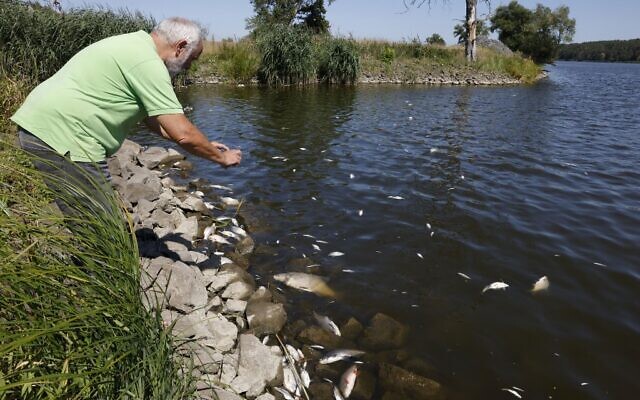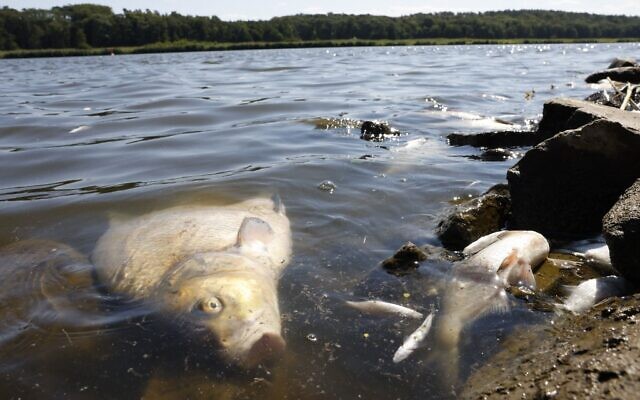Noise pollution: An oft-overlooked invisible but harmful issue
By LENA GABER - Yesterday - The Jerusalem Post
The recent years have quite vividly demonstrated how unpredictable our reality is. First, shortly after some futurists proclaimed that humanity has defeated pandemics, we got the coronavirus. And then, just as we were about to breathe a sigh of relief that it was over, Russia attacked Ukraine.
That might be considered quite sad news, taking into account that unpredictability and the corresponding sense of lack of control is probably the primary source of humans’ stress and anxiety. The good news is that even though we don’t have much control over political processes that can cause wars, hyperinflation, unemployment and so on, there are many things we do have control over, and those are probably the most important ones. Among these is one that is very close to whoever is reading this text. The name of this “thing” is “body.”
The brain has tripled in size
Scientists still can’t tell us exactly what caused our brain to triple in size during the last seven million years, but this is our reality today, no matter what caused it. The colossal organ inside our heads has brought us many benefits, such as bread, cities and Pulp Fiction. It indeed made most of us live in conditions that seem to be far more comfortable than those of any other creature. At the same time, few animals experience such an amount of stress and anxiety throughout their life, and, unlike most humans, they are highly exposed to the danger of death. While there are many stress factors, I would like to focus on just one in this article. I find it significantly underestimated in the world in general and in my new homeland, Israel, in particular. This invisible but quite annoying and harmful entity is noise.

The brain (illustrative). (credit: PIXABAY)
Exposure to noise
According to research, exposure to a level of noise exceeding 85 decibels can lead to a number of health-related consequences. And by “health-related consequences,” scientists mean a much broader spectrum of problems than hearing impairment. Noise exposure affects our entire organism. Depending on individual features, the time of exposure and the characteristics of the noise, noise pollution can cause high blood pressure, heart disease, sleep disturbances and – obviously – stress.
To give you a better idea of what kind of environment you are in right now, let me provide you with some general figures.* (Keep in mind that a non-linear, logarithmic function measures the decibels. Here you can find a simple and funny explanation of the reasons for the choice of this function.)
20 dB - whisper
40 dB - quiet library
60 dB - conversation
80 dB - loud music
100 dB - motorcycle
120 dB - threshold of pain.
These average numbers will vary depending on many factors, including culture. As you have probably already guessed, these numbers are supposed to be higher in cultures like ours, the Mediterranean ones.
Today, you don’t need any sophisticated equipment to become Disney’s Inspector Gadget for a day and measure noise levels wherever you want. Plenty of applications provide you with this opportunity for free. So below, you will see the results of my Sounds Investigation Operation, but you may want to guess first. So what are your expectations of the sound intensity in cafés, libraries, roads and train stations?
Ready to see the answers?
Tel Aviv/Herzliya: Typical café half full: 77dB
Small municipal library: 70dB/55dB
Road: 83dB
Inside train (Tel Aviv): 83dB
Train station (Savidor Central): 84dB
I’m sitting in the small library right now. When somebody is talking around me, which happens quite often here, the noise level is around 70 dB. When nobody is talking, and there is some sort of complete silence around me, the noise level is about 55dB. Air conditioners, people walking around, people talking loudly behind the closed kitchen doors, the clacking keyboards, the sounds from the streets.
Actually, the first phrase that my boyfriend heard from me when we met near the bar he chose for our first date was something like, “We won’t sit here, it’s too loud.” While now I feel sorry for being that rude, I still understand my reaction. I’m not proud of it, but I do understand it.
I come from an environment where all the above indicators are lower than average. There, I was always considered an overly loud girl and was frequently asked to speak less loudly and behave in a more quiet manner. (By the way, I see the suppression of open expression of strong emotions on some deeper societal level as one of the indicators of the many problems in the country I have escaped – i.e., Russia). But while I adore so many things in Israel, the noise intensity here is still one of the main challenges to my acceptance of the local environment. At first, I thought that it was just my problem, the problem of an overly sensitive person.
For instance, when cars with sirens turned on are passing by, in most cases I’m the only one who is immediately plugging my ears as firmly as possible to avoid literally painful feelings. But at some point, I became so annoyed with the noise that I started researching this topic. What I found out was that I was following a typical conformist pattern. As many social psychological experiments demonstrated, no matter how weird or harmful people behave, if they are the majority and you are the minority, at some point you start to doubt yourself: maybe they are right, perhaps it’s okay if that number of people are fine with this situation. Acoustic studies undoubtedly claim that the species Homo sapiens does suffer from exposure to overly loud sounds. And sounds that are too loud surround us, the inhabitants of big cities in this country, every day, sometimes most of the day.
What can we do about noise pollution?
NOW, DOES it mean that the government should prohibit all parties, cafés, concerts and basically all fun in general, as in so many cases it is closely connected with noise pollution? Mamash lo. However, several policies may be adopted or at least considered to reduce the possible harmful consequences of noise pollution. International experience has already demonstrated how some actions can improve the situation.
For example, some cities, such as Paris, have already started to use special smart cameras, or “sound radars,” to decrease road traffic noise. These cameras detect the source of the excessive sounds, scan the license plate of the vehicle, and then send the corresponding information to the authorities. Considering that most of the time Israeli roads are one of the primary sources of noise pollution, this idea seems applicable to our reality. Because sometimes I feel that it’s a sort of local law to immediately honk the horn if you are motionless for longer than five seconds; otherwise, the driver can be arrested. Because without this kind of explanation, I can’t comprehend the idea of getting satisfaction from constantly producing that ear-splitting noise.
Another practical solution to making Israeli roads less noisy is the purchase of quieter public service and transit vehicles (e.g., electric and hybrid buses). A study based on data from Sweden showed that “the use of electric buses led to significant savings in societal costs and total cost of ownership when compared to diesel and biogas-powered buses, mainly due to decreased noise, no emissions in the use phase and decreased energy use.” A Hungarian study demonstrated that electric buses might produce up to 15dB less exterior noise than diesel-powered buses. And in this regard, Israelis may be happy to learn that the Environmental Protection Ministry has set targets for purchasing zero-emission city buses for public transport operators. According to the ministry’s official website, “starting in 2026, all buses purchased will be electric.”
One more possible solution to the noise pollution problem is to use special materials inside and outside buildings that can absorb some noise. Many companies are already producing these materials and suggesting systematic practical solutions for turning buildings into quieter spaces.
Finally, education is essential in solving the noise pollution problem – as it probably is for any problem. Especially school education. Suppose Israelis, since their childhood, are aware of the possible consequences. In that case, there is a higher probability that they will consider this hazard when, for instance, they’re on the roads or starting their own businesses.
While all that was said above relates to the possible solutions on a societal level, there are many things that individuals can do themselves, such as keeping earplugs and using them if it’s too loud. Or making it a habit to have “baths of silence” occasionally. You might also consider using soundproof materials in constructing or repairing your own houses.
Coming back to where I started, I would like to conclude with the following: Many times, we wonder how people can be so evil. All these scammers, murderers, Putins. Where do they come from? Are they possessed by a demon or something? In this regard, I do think that reality is simpler than complicated religious and spiritual ideas. Our actions and the actions of any living being are driven by our body, blood pressure, cortisol level, pulse and so on. And while we can’t ensure that all the people around the world will undergo some therapy or get enough love and care so that they won’t want to destroy the world as revenge, we can make our environment more friendly, more caring and more loving. For the sake of the well-being of ourselves and the ones we love.
* Figures: Splend Sound Meter App



.jpeg)




















